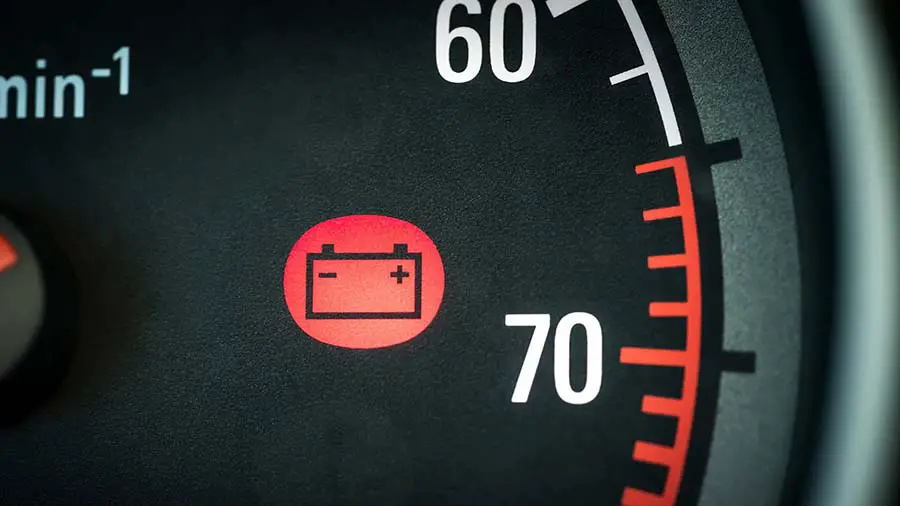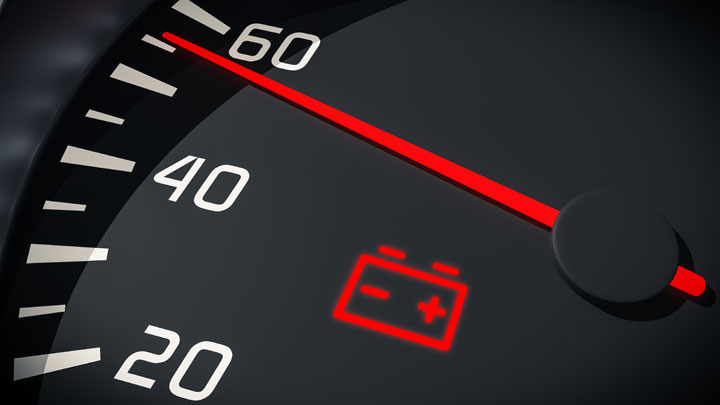Due to an unknown cause that makes your vehicle’s battery light on while you are driving, you are wondering if it is okay to continue the drive with the car battery light on. and Is it safe? Scroll down, and this article will help you with the finest decision
The Causes Of Battery Light?
A car battery light is an indicator light mounted on the car dashboard. Its mission is to inform you about the condition of your car battery. The abnormal condition may come from a crippled alternator belt, a battery cell run-down, or a defective alternator.
Your car’s battery light will be on in case there are some problems with your car battery. Under such circumstances, however, your car may be able to run a little bit farther but not recommended. The distance you drive up may mismatch your calculation to the nearest car station or next stop.
Can You Drive With The Car Battery Light On?
No, It is not recommended to drive with the car battery light on. The voltage regulator may discharge or charge an uncasual voltage volume at the time of an alert signal. If you continue to drive, it may cause more severe damage to both the battery and alternator.
If you intend on driving farther, you can reduce the burden on your failed battery or alternator by stopping redundant electronic devices such as phone chargers, radios, music players, headlights, power windows function, air conditioning, etc. It can keep your car’s power last longer on the road.
When the alternator shuts down, a lot of trouble comes. The electricity is not available anymore, causing the engine, signal light, buzzing horn, and steering support system to stop. All basic functions are unavailable at the very moment.
In this situation, it’s hard for you to find the trouble in your charging system. Because when the alternator died, there was no spark for the battery power, no charging, then no electricity.
So, stopping to check the charging system and heading to the mechanic immediately when problems occur is a wise move to ensure a smooth driving experience.
How Long Can You Drive With Battery Light On?
Technically, if the light turns on and you insist on going further, it will not last too long.
Like an unplugged storage energy item, when your car runs, the energy source will gradually be burned to zero. You can drive roughly 30-60 minutes before the car stalls and ends up standing still.
Is It Safe To Drive My Car With The Battery Light On?
Technically, it is unsafe to drive with reddy light on the dashboard. Your car won’t perform accurately as usual due to a defective battery cable or a faulty alternator. You may experience driving unsmoothly during the trip due to a weakened battery.
The car battery is one of the most vital components to guarantee your car will operate perfectly. It would be best if you tuned the battery to the right position after you know the light. Or, if you are uncertain about fixing it, leave it to professionals at the automotive shop.
Driving in low battery conditions prevent the machine from functioning properly, which easily causes traffic accidents or uncomfortable experience.
How To Solve When Car Battery Light Comes Up On The Road?

The first thing to do is to find a safe place to park your car. Your auto-balance system on your steering wheel may be unavailable at the time, so it is risky to continue your drive.
Try to turn off all electronic devices in vehicles that may waste electricity. If problems still exist when restarting, head to the closest mechanical store.
Your car may still have problems and drains the battery tank until it dies. If you’re near a safe place or the mechanics can do a full battery check, you can still drive straight there without checking to avoid wasting time on uncertainty or troubleshooting it yourself.
FAQ
How Do I Fix The Battery Light On My Dashboard?
Normally, you should bring the car to the mechanic to replace or fix it when the battery indicator lights are on. But if you want to try fixing it, there are a few steps you can consider:
- Battery inspection: Check your vehicle’s battery condition to find rusty spots, battery terminal damage, or clamps failure. Remove faulty spots or replace clamps to help the battery back on track.
- Alternator checking: Inspect your alternator to find any malfunction or abnormal electrical connection. Seek professional mechanic help in case of actual defects.
- Serpentine belt deformed: Look at the belt to see if it is deformed or cracked due to overheating or being hit hard somewhere. This easily causes loss of power steering and is confused with battery failure.
- Engine fuses: Although less relevant to battery charging than other factors but also worth checking to replace the fuses when flawed.
- Battery check: The last step after all the above is to check your battery condition by starting the engine and looking at the warning light. If the light is still there, the root should lie at your alternator and be urgent to fix immediately.
How Do You Know Signs Of Dead Battery Or Bad Alternator?
The problem may originate from a faulty alternator. It can also result from damaged auxiliary parts such as lights, sounds, fuses, alarms, etc.
Regarding the alternator, any vague or unclear indication of the vehicle’s electrical systems indicates a problem with the alternator. Dim light, fuzzy stereo system, and stall starting engine is the sign you should notice.
An auto check engine or battery signal light is much easier to accomplish with a car charging system. If your car stops running out of the blue and the light comes next, it is advised that a certified mechanic diagnose the ongoing problems.
In Conclusion
We do not recommend you to do so as it might lead to some issues that we have mentioned above. Note that it is critical to keep an eye on your car’s energy sources to prevent potential issues.
We hope our article provides useful information for you to have a safe drive and have more experience dealing with unexpected glitches on your way.









0 Comments